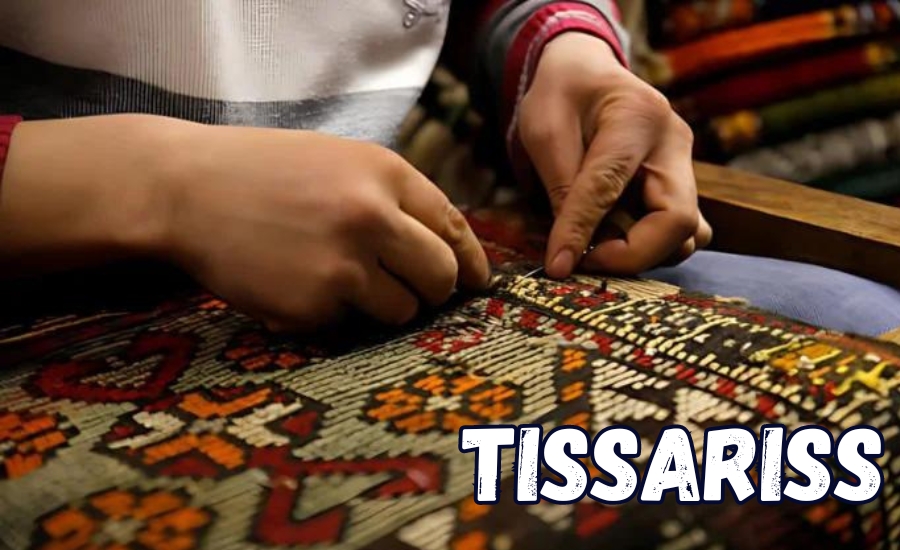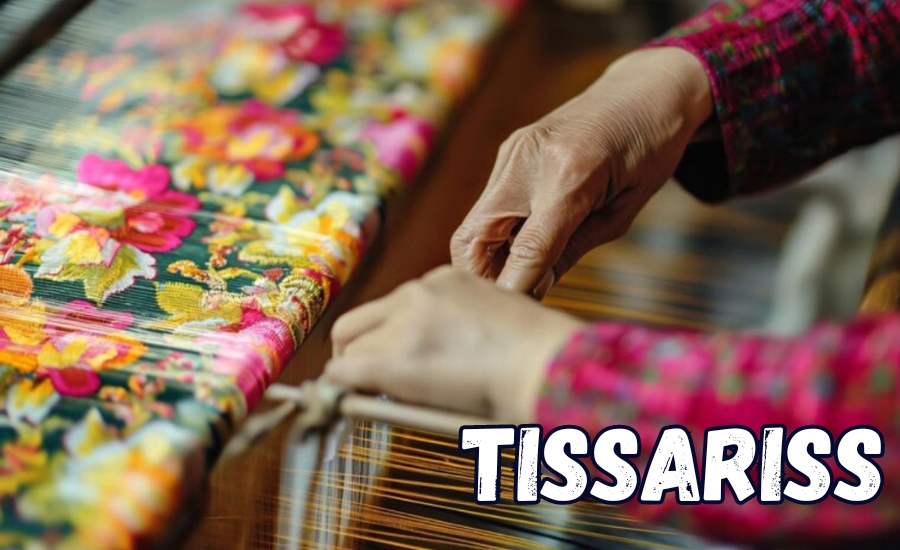Tissariss is not just another buzzword—it’s a revolutionary concept that merges art, technology, tradition, and innovation. This comprehensive guide explores every facet of Tissariss, from its historical roots to its modern applications, while delving into how it’s impacting industries and creative communities worldwide. Whether you’re new to the concept or a seasoned enthusiast, this article will walk you through everything you need to know about Tissariss and why it matters now more than ever.
What is Tissariss?
Tissariss represents the convergence of artistry and technology, offering a seamless blend of traditional craftsmanship and digital innovation. While the term may be new to some, its impact is already being felt in various industries, from fashion to digital media. The rise of Tissariss reflects a larger trend where the boundaries between manual and technological creations are dissolving, leading to a future where the two coexist harmoniously.
This concept has grown rapidly in significance, and understanding Tissariss requires diving into both its cultural history and modern technological advancements.
The Historical Roots of Tissariss: A Rich Legacy

The origins of Tissariss can be traced back to ancient times, where artistry and technology first began to intertwine.
Early Civilizations and Craftsmanship
The intersection of art and technology is not a modern phenomenon. In ancient civilizations, artisans used rudimentary tools to create intricate designs on everything from pottery to textiles. For example, in Egypt and Mesopotamia, artisans wove textiles and inscribed patterns using simple looms and chisels. These early methods of integrating technology into art laid the foundation for the evolution of Tissariss as we understand it today.
The Industrial Revolution: A Turning Point
Fast forward to the Industrial Revolution, where mechanization changed the landscape of artistry. Machines allowed for mass production, which enabled more people to access beautifully designed goods. However, this shift also introduced tension between hand-made craftsmanship and machine-produced art. Tissariss was born out of this duality, seeking to merge the two in a harmonious way.
Tissariss in the Digital Age
With the advent of digital tools and software, the world of art expanded exponentially. Artists could now create, edit, and share their works in ways that were previously unimaginable. Programs like Photoshop, AutoCAD, and Blender introduced new dimensions of design, allowing Tissariss to evolve from a purely physical practice to a digital one. Today, Tissariss embodies both the tactile and the virtual, giving rise to a hybrid form of creative expression.
The Techniques and Materials of Tissariss
The beauty of Tissariss lies in its versatile techniques and materials, blending traditional methods with cutting-edge innovations.
Traditional Techniques
In its more traditional forms, Tissariss relies on hand-weaving, embroidery, and painting. These meticulous processes demand a high level of craftsmanship, and many artisans spend years mastering their techniques. The textiles, patterns, and dyes used in these creations often reflect the cultural heritage of the artisan, making every piece a work of cultural significance.
Modern Techniques: Merging Craft with Code
Modern Tissariss artists now incorporate digital tools to push the boundaries of what’s possible. Digital weaving machines, AI-powered design software, and 3D printing are just a few of the innovations that Tissariss artists employ. These tools allow creators to experiment with new forms, patterns, and textures, offering endless possibilities for innovation.
Materials: Natural Meets Synthetic
Tissariss works use both natural and synthetic materials, combining the old and the new. Natural fibers like silk and cotton provide durability and aesthetic appeal, while synthetic fibers like nylon and polyester allow for enhanced flexibility and strength. Furthermore, the rise of sustainable materials is influencing Tissariss artists to incorporate eco-friendly elements, making their work not just beautiful, but environmentally responsible.
The Cultural Significance of Tissariss
Tissariss art is more than just a decorative craft—it serves as a cultural bridge between the past and the present, often imbued with deep historical and spiritual meanings.
Symbolism in Tissariss Art
Each piece of Tissariss art often carries symbolic weight. In some cultures, the patterns and colors used in the artwork are tied to specific traditions, rituals, and beliefs. For example, geometric patterns might symbolize harmony and balance, while certain colors are used to represent life cycles or spiritual beliefs.
Tissariss as a Cultural Artifact
Many communities continue to use Tissariss art as a form of preserving their cultural identity. Artisans pass down techniques from one generation to the next, ensuring that their craft, stories, and cultural practices endure. The art of Tissariss often reflects the values of the community from which it originates, making each piece a snapshot of cultural history.
Tissariss in the Modern World: Art Meets Technology
The introduction of technology into the world of Tissariss has expanded its possibilities exponentially, making it relevant in today’s fast-paced, tech-driven world.
Virtual Reality (VR) and Tissariss
One of the most exciting developments in Tissariss art is the integration of virtual reality (VR). Artists are using VR to create immersive experiences where viewers can step inside digital representations of their work. These virtual galleries allow audiences to engage with art in ways never before possible, from walking through a digitally woven tapestry to interacting with a virtual sculpture.
AI and Machine Learning
Artificial intelligence (AI) is another frontier in the world of Tissariss. Some artists use AI algorithms to generate intricate designs that evolve in real-time, responding to audience interactions. Machine learning allows the Tissariss artist to create pieces that change based on data inputs, making the viewer an integral part of the creative process.
Sustainable Innovation
The fusion of Tissariss with sustainable practices has also caught the attention of contemporary audiences. From upcycling discarded materials to using eco-friendly dyes, Tissariss artists are pushing for innovations that not only enhance the art but also contribute to a more sustainable future.
The Impact of Tissariss on Different Industries

Tissariss is not limited to the art world—it has practical applications across various industries.
Fashion
Tissariss has made waves in the fashion industry by combining traditional textile techniques with futuristic design elements. Many high-fashion designers now collaborate with Tissariss artists to create clothing lines that merge hand-crafted details with digital patterns. This collaboration has resulted in unique pieces that are both wearable and collectable works of art.
Architecture and Interior Design
In the realm of architecture and interior design, Tissariss has been used to create visually stunning and functional spaces. From woven partitions to textile-based acoustic panels, the application of Tissariss techniques in interior spaces offers a tactile, aesthetically rich experience that elevates the environment.
Digital Media
Tissariss has also carved a niche in the digital media world, where the line between art and technology is most fluid. Digital artists often incorporate Tissariss-inspired elements into website design, video game environments, and even virtual event spaces, making the virtual world feel more tangible and human.
Challenges and Future Directions for Tissariss
While the growth of Tissariss is exciting, it’s not without its challenges.
Accessibility and Costs
One of the biggest barriers to widespread adoption of Tissariss is its cost. Traditional methods of creation can be labor-intensive and time-consuming, making Tissariss art more expensive than mass-produced alternatives. Additionally, integrating cutting-edge technology into Tissariss adds another layer of complexity and cost.
Education and Training
Another challenge lies in educating the next generation of Tissariss artists. As the art form evolves, a new skill set is required. It’s essential for institutions to provide the necessary resources and training to preserve both the traditional and modern aspects of Tissariss.
Conclusion
Tissariss is more than a passing trend—it’s a movement that bridges the gap between tradition and modernity, between art and technology. As more artists, designers, and innovators embrace Tissariss, its influence will only continue to grow. Whether in galleries, fashion shows, or digital spaces, Tissariss is set to redefine how we experience creativity and craftsmanship in the 21st century.
For anyone looking to stay ahead of the curve, embracing Tissariss is a must. Its ability to adapt, evolve, and inspire makes it a key player in the future of both art and technology.
FAQs
Q: What is Tissariss?
A: Tissariss is a concept that blends traditional craftsmanship with modern technology, creating unique forms of artistic expression across various industries.
Q: How does Tissariss combine art and technology?
A: Tissariss merges digital tools like virtual reality, AI, and machine learning with traditional artistic techniques, allowing for new, innovative creations.
Q: What industries benefit from Tissariss?
A: Tissariss has applications in fashion, architecture, interior design, and digital media, offering both aesthetic and functional solutions.
Q: Is Tissariss art sustainable?
A: Many Tissariss artists incorporate eco-friendly materials and sustainable practices, making it both innovative and environmentally responsible.
Q: Can I collect Tissariss art?
A: Yes, Tissariss art is collectible, and you can find unique pieces through galleries, exhibitions, and online platforms showcasing modern and traditional works.
Stay informed with the latest news and updates on Dallasinsiders.com
